Coinciding with Russia’s resurgence as a world power and it’s emerging role in the region, Lada is also making a comeback to certain Middle East Markets, including Jordan, as of late last year. The right car at the right time for Jordanian motorists, Lada’s affordable model range is an antidote to rising prices. Star among the Russian car maker’s line-up however remains its long-serving, compact, rugged and iconic 4×4. Ditching the familiar Niva nameplate, the Lada 4×4 is improved but little changed since it was first launched 40 years ago, it does however make slight concessions to comfort and convenience in Urban trim level, as driven.
 Though mildly refreshed cosmetically and with more comfort than before, the Lada 4×4 oozes authenticity, and is a product of Soviet times that remains relevant today. Engineered for rugged off-road ability in harsh rural Russian conditions, the 4×4 is however also designed to be comfortable and maneuverable on city streets, and in that regard was ahead of its time and long predated the now wildly popular crossover SUV segment. Uncomplicated, unpretentious and easily maintainable, the 4×4 was both a ‘people’s car’ and Russian answer to Land Rover and Jeep when launched, and is now one of the most affordable, maneuverable and off-road capable cars available.
Though mildly refreshed cosmetically and with more comfort than before, the Lada 4×4 oozes authenticity, and is a product of Soviet times that remains relevant today. Engineered for rugged off-road ability in harsh rural Russian conditions, the 4×4 is however also designed to be comfortable and maneuverable on city streets, and in that regard was ahead of its time and long predated the now wildly popular crossover SUV segment. Uncomplicated, unpretentious and easily maintainable, the 4×4 was both a ‘people’s car’ and Russian answer to Land Rover and Jeep when launched, and is now one of the most affordable, maneuverable and off-road capable cars available.
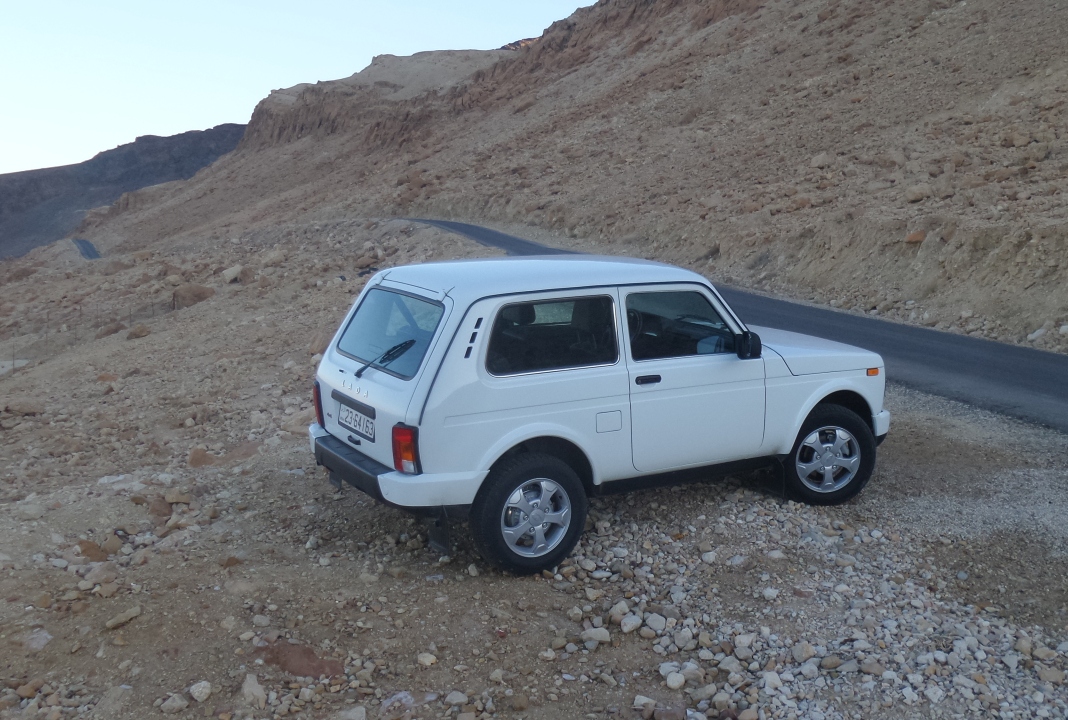 An affordable and utilitarian daily car for many, the Lada 4×4 is for others an attainable second or third occasional, dedicated or hobby vehicle like a Caterham for trackday enthusiasts or a Harley-Davidson for weekend bikers. Ideal for mechanical and aesthetic customization and off-road adventuring, the 4×4 offers extensive ability and peace of mind over inhospitable terrain, next to ‘precious’ SUVs costing multiples more. Iconic and honest, the petite 4×4’s features boxy, uncomplicated styling and surfacing, with distinctive low-slung headlights and revised vertical rear lights. The Urban version driven additionally features new integrated body colour bumpers and more road-friendly 16-inch alloy wheels and 185/75R16 tyres.
An affordable and utilitarian daily car for many, the Lada 4×4 is for others an attainable second or third occasional, dedicated or hobby vehicle like a Caterham for trackday enthusiasts or a Harley-Davidson for weekend bikers. Ideal for mechanical and aesthetic customization and off-road adventuring, the 4×4 offers extensive ability and peace of mind over inhospitable terrain, next to ‘precious’ SUVs costing multiples more. Iconic and honest, the petite 4×4’s features boxy, uncomplicated styling and surfacing, with distinctive low-slung headlights and revised vertical rear lights. The Urban version driven additionally features new integrated body colour bumpers and more road-friendly 16-inch alloy wheels and 185/75R16 tyres.
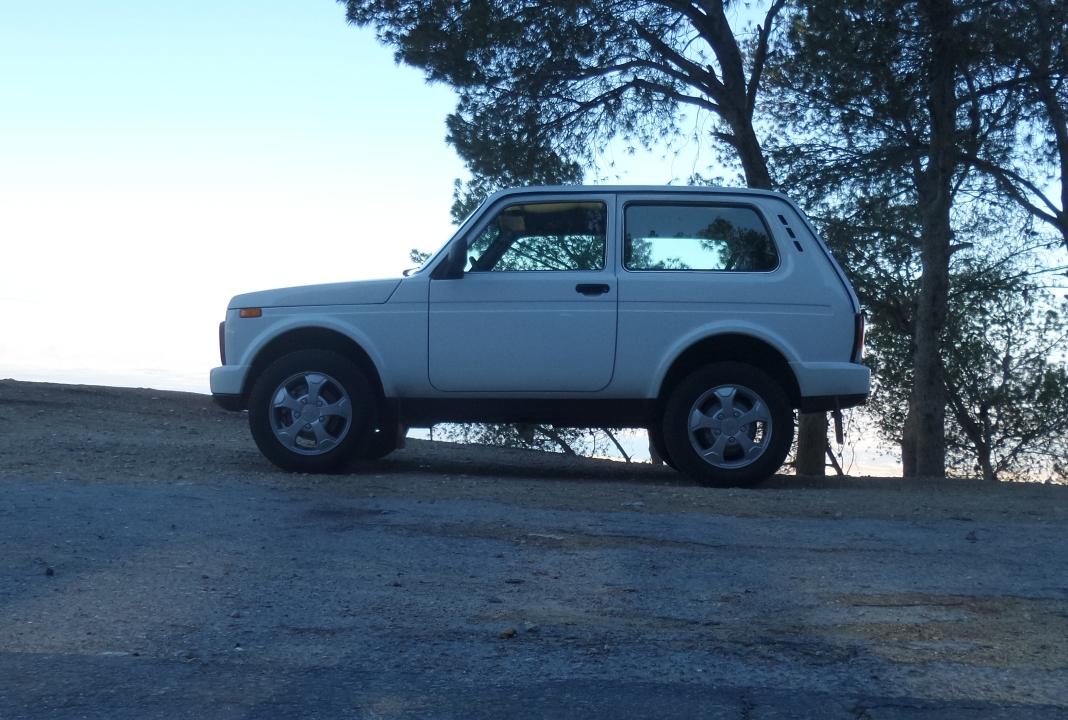 Powered by a proven, uncomplicated and lower revving naturally-aspirated 1.7-litre 8-valve SOHC 4-cylinder petrol engine mounted in-line, the Lada 4×4 develops 83HP at 5000rpm and 95lb/ft at 4000rpm. With aggressive gearing, light 1210kg weight and little sound deadening, the 4×4 feels quicker than the 17-seconds it takes from standstill to 100km/h. Meanwhile, its engine is responsive and eager in lower and mid-range, delivering perky city and confident motorway driving. Progressive in delivery but with good low-end pull, the 4×4 accumulating speed well on motorway, but sounds strained and gruff as revs rise toward the redline, while acceleration trails off somewhat as it nears its 142km/h top speed.
Powered by a proven, uncomplicated and lower revving naturally-aspirated 1.7-litre 8-valve SOHC 4-cylinder petrol engine mounted in-line, the Lada 4×4 develops 83HP at 5000rpm and 95lb/ft at 4000rpm. With aggressive gearing, light 1210kg weight and little sound deadening, the 4×4 feels quicker than the 17-seconds it takes from standstill to 100km/h. Meanwhile, its engine is responsive and eager in lower and mid-range, delivering perky city and confident motorway driving. Progressive in delivery but with good low-end pull, the 4×4 accumulating speed well on motorway, but sounds strained and gruff as revs rise toward the redline, while acceleration trails off somewhat as it nears its 142km/h top speed.
 Available exclusively with a 5-speed manual gearbox with long and angled gear lever, the Lada 4×4 however shift action is shorter than one imagines. Crisp, clean and satisfyingly firm, mechanical and precise through ratios, and with intuitive clarity to its clutch biting point, the 4×4’s manual gearbox adds immensely to its uncorrupted and engaging driving experience. Driving the rear wheels in normal on-road conditions and moderate dirt roads, the Lada’s 4×4 system is however engaged with a separate lever for more demanding off-road driving. The Lada’s off-road hardware also includes low-ratio four-wheel-drive to drive with full power at crawling pace for yet more extreme off-road conditions and inclines.
Available exclusively with a 5-speed manual gearbox with long and angled gear lever, the Lada 4×4 however shift action is shorter than one imagines. Crisp, clean and satisfyingly firm, mechanical and precise through ratios, and with intuitive clarity to its clutch biting point, the 4×4’s manual gearbox adds immensely to its uncorrupted and engaging driving experience. Driving the rear wheels in normal on-road conditions and moderate dirt roads, the Lada’s 4×4 system is however engaged with a separate lever for more demanding off-road driving. The Lada’s off-road hardware also includes low-ratio four-wheel-drive to drive with full power at crawling pace for yet more extreme off-road conditions and inclines.
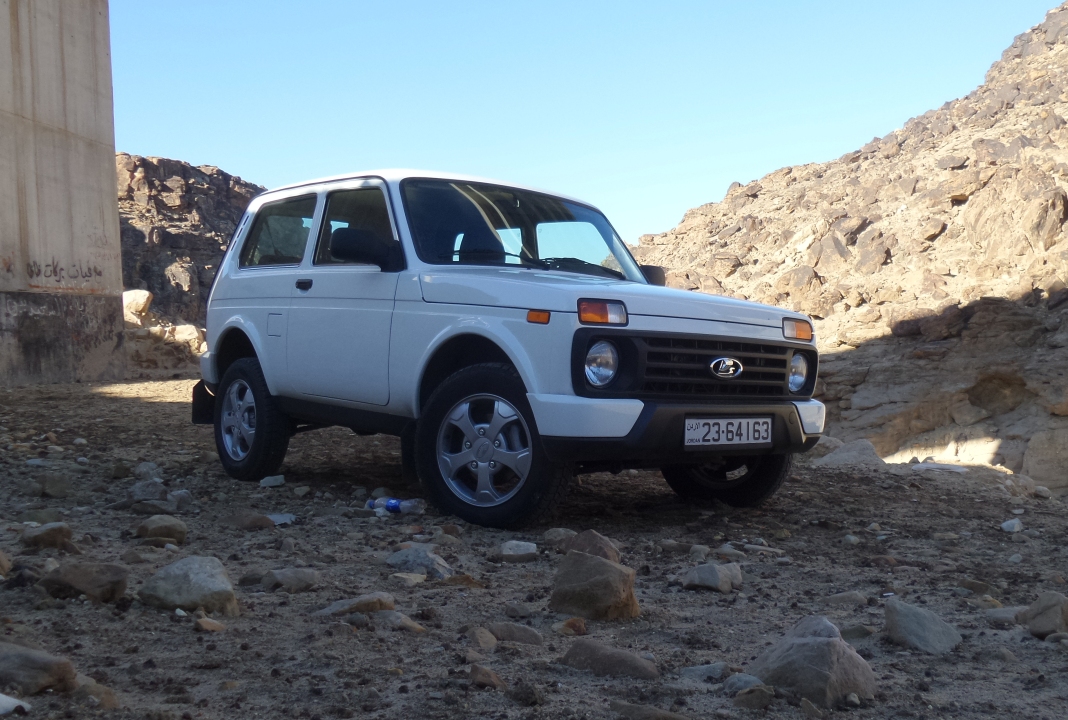 An innovative and genuine dual-use vehicle for off-road and practical daily driving when first launched, the Lada 4×4 is built on a unibody frame underpinned by independent double wishbone front and live-axle, coil-spring rear suspension for comfort and ability. If not as insulated from noise as more modern crossovers, the Lada however rides with refined and forgiving fluency over Jordan’s lumpy, bumpy roads and on rugged unpaved roads. With supple suspension absorbent high profile tyres and small wheelbase, the Lada 4×4 however felt surprisingly more buttoned down in vertical travel over crests and dips, and better damped and settled on rebound than quite a few more modern cars.
An innovative and genuine dual-use vehicle for off-road and practical daily driving when first launched, the Lada 4×4 is built on a unibody frame underpinned by independent double wishbone front and live-axle, coil-spring rear suspension for comfort and ability. If not as insulated from noise as more modern crossovers, the Lada however rides with refined and forgiving fluency over Jordan’s lumpy, bumpy roads and on rugged unpaved roads. With supple suspension absorbent high profile tyres and small wheelbase, the Lada 4×4 however felt surprisingly more buttoned down in vertical travel over crests and dips, and better damped and settled on rebound than quite a few more modern cars.
 Small and light with short wheelbase, big footprint and balanced chassis and weighting, the Lada 4×4 is unexpectedly engaging and fun on road, especially given its primary reputation for off-road ability. Weaving through winding county switchbacks in rear-drive mode, the Lada like to be pushed hard, with its slim tyres and well-weighted hydraulic-assisted steering providing decent road feel and its accurate throttle control allowing one to gradually dial in power out of corners. Confident through corners and seemingly immune to under- or over-steer in most situations, and while body lean is more pronounced than with a stiffer more modern car, it remains nevertheless delivers reassuringly committed road-holding.
Small and light with short wheelbase, big footprint and balanced chassis and weighting, the Lada 4×4 is unexpectedly engaging and fun on road, especially given its primary reputation for off-road ability. Weaving through winding county switchbacks in rear-drive mode, the Lada like to be pushed hard, with its slim tyres and well-weighted hydraulic-assisted steering providing decent road feel and its accurate throttle control allowing one to gradually dial in power out of corners. Confident through corners and seemingly immune to under- or over-steer in most situations, and while body lean is more pronounced than with a stiffer more modern car, it remains nevertheless delivers reassuringly committed road-holding.
 Stable at motorway speeds for so small a car, the Lada 4×4 is also agile and maneuverable. Turning on the proverbial dime through corners, it is easily maneuverable through narrow country and city roads, and can access narrow off-road trails that larger SUVs can’t. Ruggedly effective, the 4×4’s off-road ability is extensive, and includes excellent 213mm ground clearance and approach, break-over and departure angles owing to its size and short overhangs. In addition to estimated 510-600mm water fording and 1000mm snow fording capability, the Lada 4×4 also features a locking rear differential keep it moving over steep inclines, low traction surfaces and extreme off-road conditions.
Stable at motorway speeds for so small a car, the Lada 4×4 is also agile and maneuverable. Turning on the proverbial dime through corners, it is easily maneuverable through narrow country and city roads, and can access narrow off-road trails that larger SUVs can’t. Ruggedly effective, the 4×4’s off-road ability is extensive, and includes excellent 213mm ground clearance and approach, break-over and departure angles owing to its size and short overhangs. In addition to estimated 510-600mm water fording and 1000mm snow fording capability, the Lada 4×4 also features a locking rear differential keep it moving over steep inclines, low traction surfaces and extreme off-road conditions.
 A victory of engineering minimalism over excess, the 4×4’s boxy design and small 3640mm long and 1680mm wide dimensions provide excellent visibility and maneuverability in tight confines, and terrific space efficiency and packaging. Accommodating four adults, the 3-door 4×4 features good headroom front and rear, and 263-litre cargo volume that expands to 982-litre. Relatively minimalist inside, the 4×4’s comfortable cabin features tough hard plastics and clear instrumentation, but now includes conveniences like electric windows and two-speed A/C. Meanwhile, upright seating and driving position are good, but better side and lumbar support, steering reach adjustment and rear head restraints would be welcome features.
A victory of engineering minimalism over excess, the 4×4’s boxy design and small 3640mm long and 1680mm wide dimensions provide excellent visibility and maneuverability in tight confines, and terrific space efficiency and packaging. Accommodating four adults, the 3-door 4×4 features good headroom front and rear, and 263-litre cargo volume that expands to 982-litre. Relatively minimalist inside, the 4×4’s comfortable cabin features tough hard plastics and clear instrumentation, but now includes conveniences like electric windows and two-speed A/C. Meanwhile, upright seating and driving position are good, but better side and lumbar support, steering reach adjustment and rear head restraints would be welcome features.
Among the most affordable and accessible cars available in Jordan presently at JD13,500 on the road with a recently advertised down payment of JD999, the Lada 4×4 Urban comes with a 3-year warranty inclusive of a 60,000km parts and labour service package and unlimited mileage roadside assistance, and a 6-year paint warranty.
Specifications: Lada 4×4 Urban
- Engine: 1.7-litre, in-line 4-cylinders
- Bore x stroke: 82 x 80mm
- Compression ratio: 9.3:1
- Valve-train: 8-valve, SOHC
- Gearbox: 5-speed manual, four-wheel-drive
- Driveline: low gear transfer, locking rear differential
- Final drive: 3.9:1
- Power, BHP (PS) [kW]: 82 (83) [61] @5000rpm
- Specific power: 48.5BHP/litre
- Power-to-weight: 63.8 (kerb)
- Torque, lb/ft (Nm): 95 (129) @4000rpm
- Specific torque: 100.4Nm/litre
- Torque-to-weight: (kerb)
- 0-100km/h: 17-seconds
- Top speed: 142km/h
- Fuel consumption, combined: 9.9-litres/100km
- Fuel capacity: 50-litres
- Length: 3640mm
- Width: 1680mm
- Height: 1640mm
- Wheelbase: 2200mm
- Overhang, F/R: 650/780mm
- Track, F/R: 1440/1420mm
- Minimum ground clearance: 213mm
- Cargo volume, min/max: 263-/982-litres
- Water fording: 510-600mm (est.)
- Snow fording: 1000mm (est.)
- Slope angle 58° (est.)
- Unladen / kerb weight: 1210/1285kg
- Gross weight: 1610kg
- Towing capacity, braked / unbraked: 600/300kg
- Suspension, F: Independent, Double wishbones, coilovers
- Suspension, R: Trailing arm, Panhard rod, coil springs
- Steering: Power-assisted recirculating ball
- Turning circle: 11-meters
- Brakes, F/R: Discs / drums
- Tyres: 185/75R16
- Price, on the road: JD13,500
Rivals and alternatives
Suzuki Jimny
 The Lada 4×4’s closest conceptual competitor, the Suzuki Jimny is a tiny yet hardcore off-roader with the necessary hardware to best many larger, pricier and more powerful off-roaders. A veritable mountain goat among SUVs able to maneuver in the narrowest trails, the Jimny features body-on-frame construction, live axles, low gear ratios, and benefits from excellent off-road clearance and angles.
The Lada 4×4’s closest conceptual competitor, the Suzuki Jimny is a tiny yet hardcore off-roader with the necessary hardware to best many larger, pricier and more powerful off-roaders. A veritable mountain goat among SUVs able to maneuver in the narrowest trails, the Jimny features body-on-frame construction, live axles, low gear ratios, and benefits from excellent off-road clearance and angles.
Specifications: Engine: 1.3-litre, in-line 4-cylinders; Gearbox: 5-speed manual, four-wheel-drive, low gear ratios; Power, BHP (PS) [kW]: 87 (88) [65] @6,000rpm; Torque, lb/ft (Nm): 87 (118) @4,000rpm; 0-100km/h: 14.1-seconds; Top speed: 140km/h; Length: 3,600mm; Width: 1,600mm; Height: 1,705mm; Wheelbase: 2,250mm Ground clearance: 190mm; Approach / break-over / departure: 34° / 31° /46°; Weight: 1,060kg; Suspension: solid axles, coil springs
UAZ Hunter
 An even longer running affordable Russian SUV than the Lada 4×4, the UAZ Hunter was first introduced in 1971 as the 469 light military vehicle, and remains in production as a rugged, capable and uncomplicated off-roader. Larger than the Lada, the Hunter is decidedly more old school, Spartan and militaristic, with body-on-chassis construction, live axles, low gear ratios and excellent off-road angles and clearance.
An even longer running affordable Russian SUV than the Lada 4×4, the UAZ Hunter was first introduced in 1971 as the 469 light military vehicle, and remains in production as a rugged, capable and uncomplicated off-roader. Larger than the Lada, the Hunter is decidedly more old school, Spartan and militaristic, with body-on-chassis construction, live axles, low gear ratios and excellent off-road angles and clearance.
Specifications: Engine: 2.7-litre, in-line 4-cylinders; Gearbox: 5-speed manual, four-wheel-drive, low gear ratios; Power, BHP (PS) [kW]: 133 (135) [99] @4,600rpm; Torque, lb/ft (Nm): 155 (210) @2,500rpm; Top speed: 130km/h; Length: 4,100mm; Width: 1,730mm; Height: 2,025mm; Wheelbase: 2,380mm Ground clearance: 210mm; Water fording: 500mm; Approach / break-over / departure: 50° / 36° /39°; Weight: 1,845kg; Suspension, F/R: Solid axles, coil springs / solid axles, leaf springs
Mahindra Thar
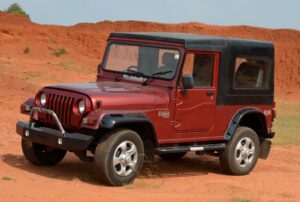 Indian manufacturer Mahindra’s replacement for its licensed Willys CJ3B predecessors, the Thar is a larger but still dedicated off-roader bearing unmistakable resemblance to the iconic WW2 Willys. Powered by a turbo-diesel engine and kitted with a locking rear differential, low gears, live axles and body-on-frame construction, the Thar is an affordable off-roader with two doors and six passenger capacity.
Indian manufacturer Mahindra’s replacement for its licensed Willys CJ3B predecessors, the Thar is a larger but still dedicated off-roader bearing unmistakable resemblance to the iconic WW2 Willys. Powered by a turbo-diesel engine and kitted with a locking rear differential, low gears, live axles and body-on-frame construction, the Thar is an affordable off-roader with two doors and six passenger capacity.
Specifications: Engine: 2.5-litre, in-line turbo-diesel 4-cylinders; Gearbox: 5-speed manual, four-wheel-drive, low gear ratios, locking rear differential; Power, BHP (PS) [kW]: 105 (106) [78] @3,800rpm; Torque, lb/ft (Nm): 182 (247) @1,800-2,000rpm; 0-100km/h: 15.8-seconds; Top speed: 154km/h; Length: 3,920mm; Width: 1,726mm; Height: 1,930mm; Wheelbase: 2,430mm Ground clearance: 200mm; Approach / departure: 44° / 27°; Weight: 1,750kg; Suspension, F/R: Semi-independent / solid axles, leaf springs


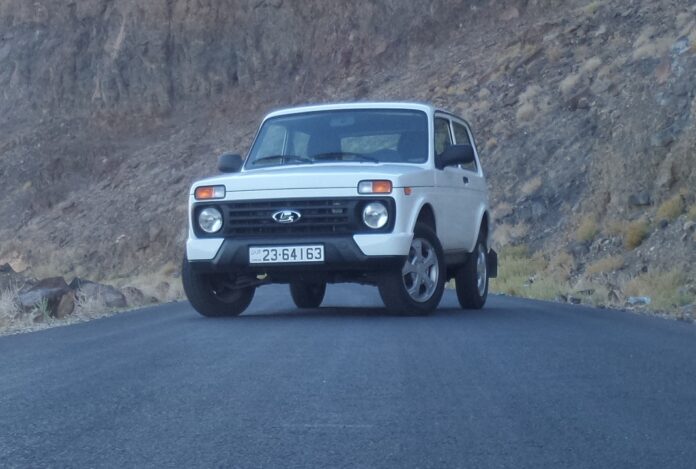
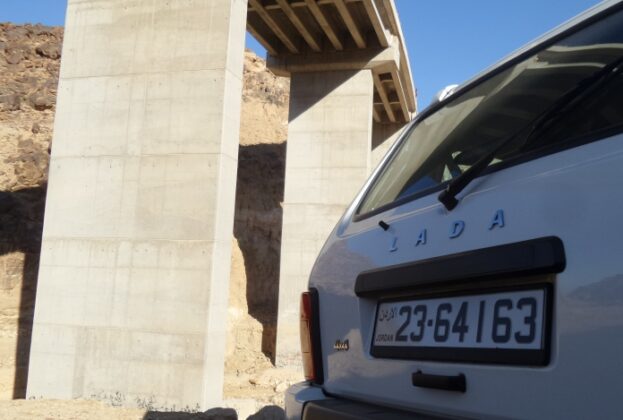
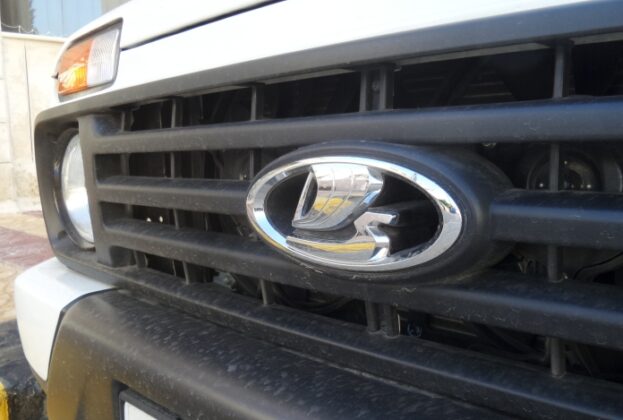
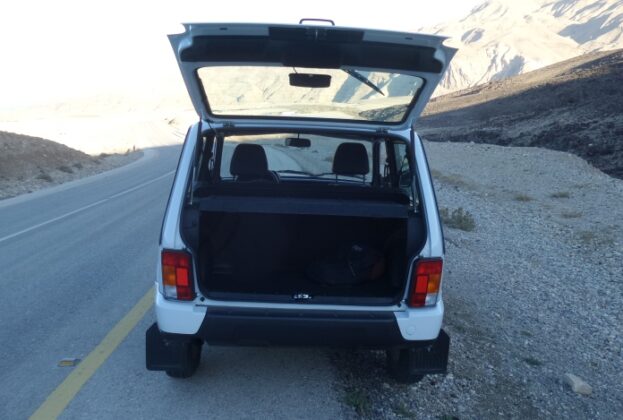
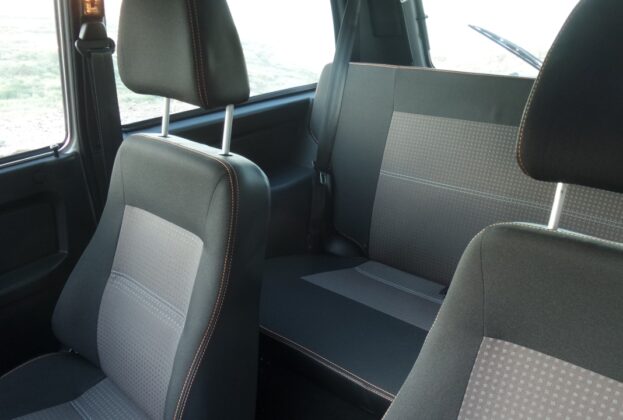
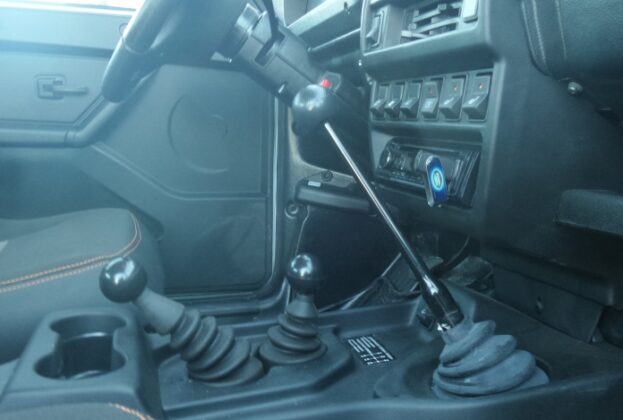
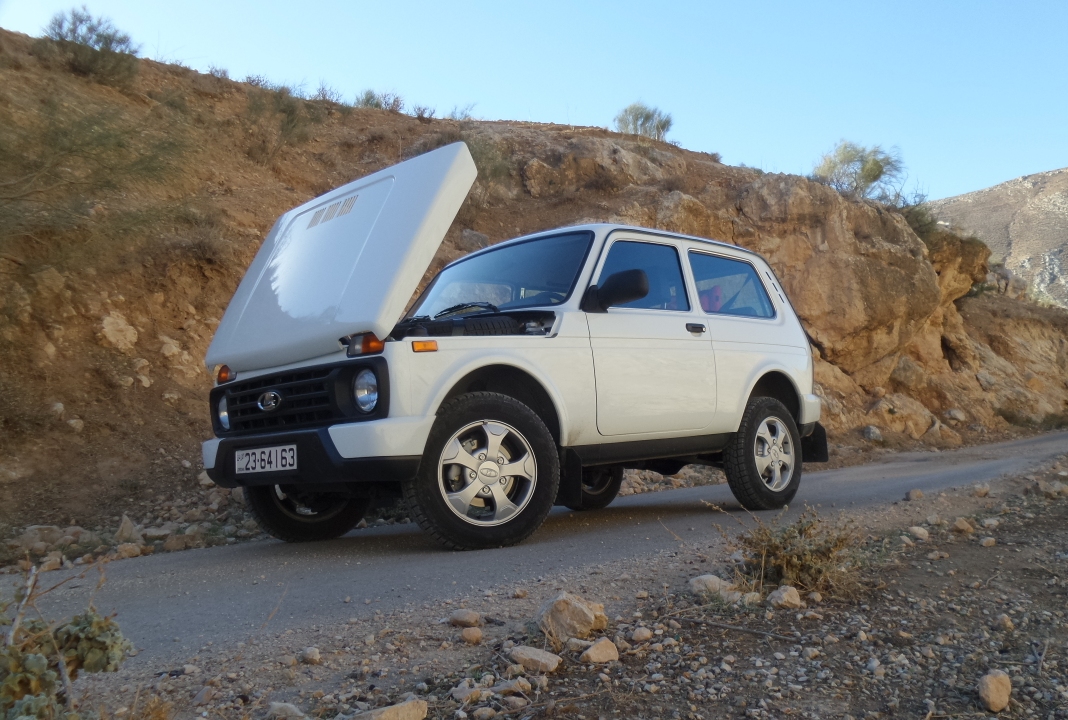

























Recent Comments